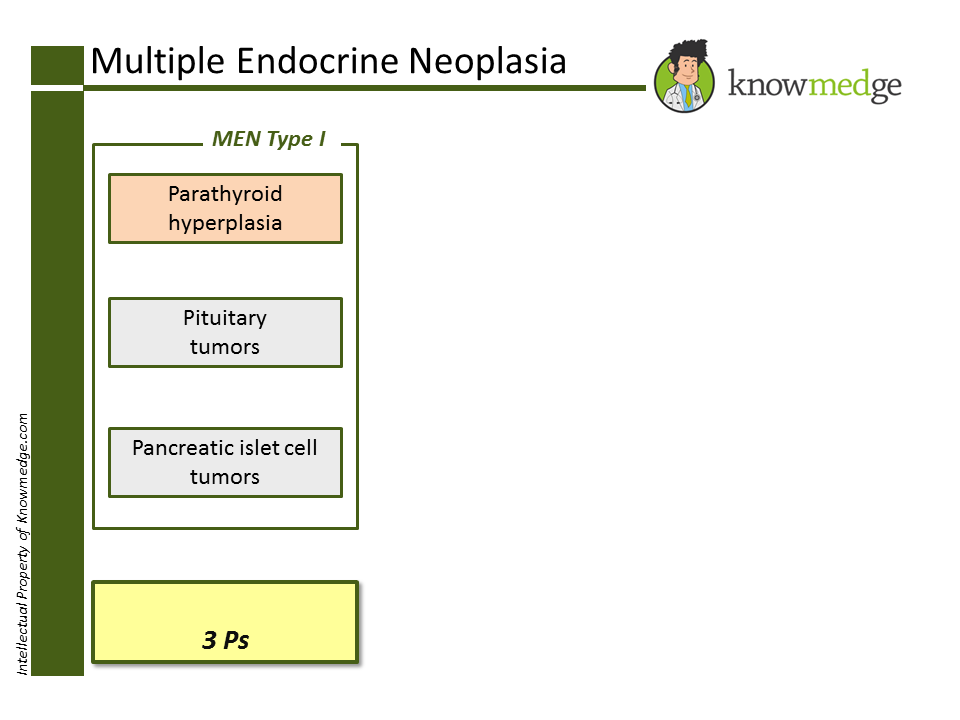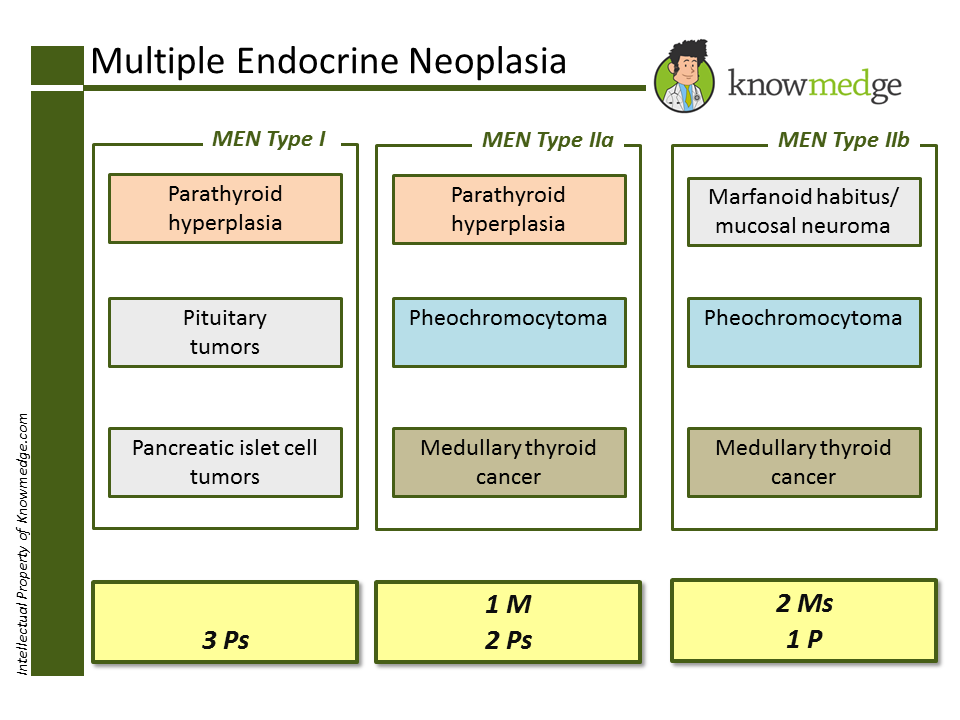Board Review: Multiple Endocrine Neoplasia (MEN) syndromes
In medical school, the three multiple endocrine neoplasia (MEN) syndrome types hardly take up a couple of Powerpoint slides during your endocrinology course. During Internal Medicine residency, you may see one case during your three years…if you are lucky. Even as an internist with a storied career spanning decades, you’ll be able to count on a single hand the number of patients with any of these syndromes.
Yet, for some reason, USMLE Step exams, Internal Medicine shelf exams, and the ABIM board certification and recertification exams all love to test students, residents and attending physicians on this concept. Indeed, it appears on the ABIM blueprint syllabus under the heading “Polyglandular disorders” of the endocrinology section. The roughly 2% of questions on the topic may not seem like a lot but it could make the difference between a passing and failing score on the ABIM exam.
I recall in medical school first reading of the three syndromes and being puzzled by the goofy numbering: I, IIa, IIb. It seemed almost as ridiculous as renal tubular acidosis (RTA) categorization. Yet, I figured since the boards tend to favor rare conditions, especially syndromes, it probably made sense to learn these three. However, I sensed I needed a mnemonic. First Aid for USMLE Step I surprisingly at the time didn’t have any tips for remembering the diseases found in each one so I ended up creating my own.
The first thing I noticed as I read the list of disorders is that they all begin with either an M or a P:
- Parathyroid hyperplasia
- Pituitary tumors
- Pancreatic islet cell tumors
- Pheochromocytoma
- Medullary thyroid cancer
- Marfanoid habitus/mucosal neuroma
MEN type I features the top three: MEN type IIa shares Parathyroid hyperplasia but, instead of Pituitary tumors, has Pheochromocytoma. Medullary thyroid cancer completes the triad. Thus, we can say that MEN type IIa has 2 Ps and 1 M.

MEN type IIb has both Pheochromocytoma and Medullary thyroid cancer in common with MEN type IIa. The third disorder begins with an M: Marfanoid habitus/Mucosal neuroma. Therefore, MEN type IIb has 1 P and 2 Ms. I’m sure others have used a similar approach but I hadn’t come across it before I started studying. It’s not a slam-dunk mnemonic since you still need to know which Ps and which Ms fall within each type but it at least gives a framework to guide you. Personally, I remember that Pheochromocytoma is in IIa and IIb because it involves very high blood pressure readings and thus is more at home in the higher number types. And how do you remember that Medullary thyroid cancer, instead of Marfanoid habitus, is in IIa and IIb? Medullary “meddles” in both types.









